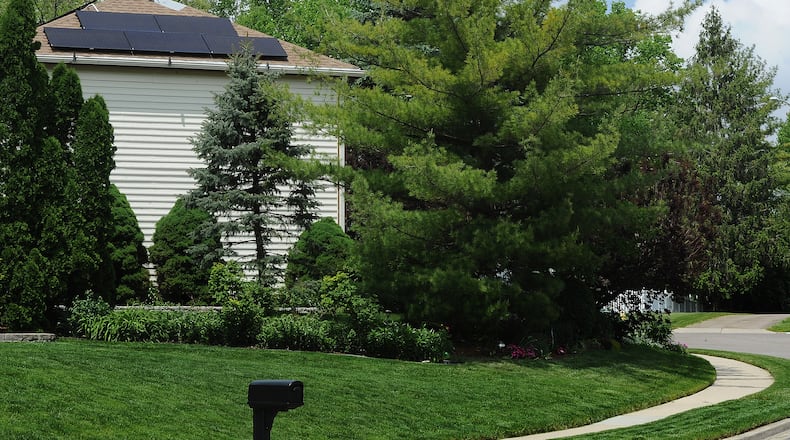The five panels on the south-facing side are visible from the road, as Smith’s house is situated on a curving cul-de-sac in a position that leaves both the front and south-facing sides directly visible from the road.
As such, the five south-facing panels are in violation of the city of Vandalia’s solar panel ordinance, which prohibits the installation of solar panels in a way that faces a street. Smith has submitted a variance request seeking an exception to the rule, which is set to be voted on by city council at its June 19 meeting.
“The panels have been sitting on my roof for 17 months now, unused,” Smith said in an email to this newspaper. “During that time, I could have saved over $2,000 in electricity, and also saved the environment by drawing my power directly from the sun rather than from coal-burning power plants.”
Solar energy accounted for only about 3% of the electricity generated in the United States in 2021, according to the U.S. Energy Information Administration — far behind natural gas, coal, nuclear and even wind.
But its share is growing. The Pew Research Center, citing data from the USEIA and others, said residential solar power installations rose by 34% in 2021, and by mid-2022, had set five consecutive quarterly growth records.
Smith claims of the 19 panels he’s had installed, those on the south-facing roof would draw the most power from the sun, and moving them to the opposite side of the house would place them in a more shady area with less direct sunlight.
At its May 1 meeting, city council voted unanimously to amend the city’s current regulations on solar panels. But the changes were mainly to provide clarity in the ordinance’s language — no changes were made to the rule prohibiting street-facing solar panels.
The changes passed by council on May 1 had been recommended for approval by city’s planning commission in a 4-1 vote earlier this year.
During a March planning commission meeting, city planner Michael Hammes said the rationale for prohibiting front-facing solar panels can be boiled down to two arguments, including that front-facing panels may appear unsightly, and that reflected light from road-facing panels may create a glare which could present a traffic hazard.
Commission member David Arnold raised a concern that the proposed ordinance amendments do not address the issue that has prompted an influx of variance requests for front-facing solar panels.
Arnold specifically referred to Smith’s application. According to meeting documents, staff, including the city’s law director, had officially deemed the south-facing side of Smith’s home to be front-facing, requiring him to submit the variance request. Arnold stated he disagreed with staff’s interpretation in this case, claiming the process of determining what constitutes front-facing as ambiguous.
Hammes said the commission was limited to amending the sections of the ordinance, and that standards for determining a “front yard” were out of the scope of the specific amendment in consideration. But Hammes did note there was a consensus among the commission that some change may be necessary to make the provision less ambiguous and that the sentiment would be communicated to council.
About the Author

